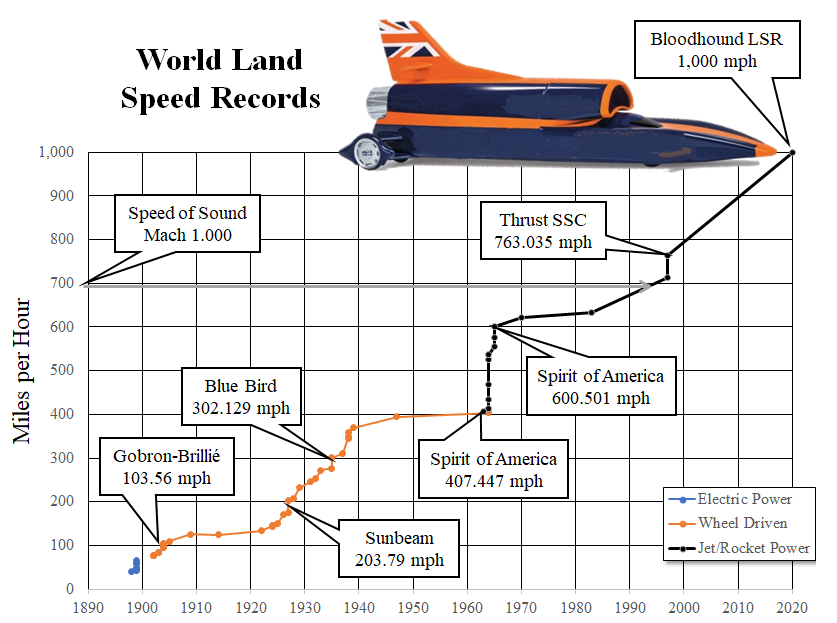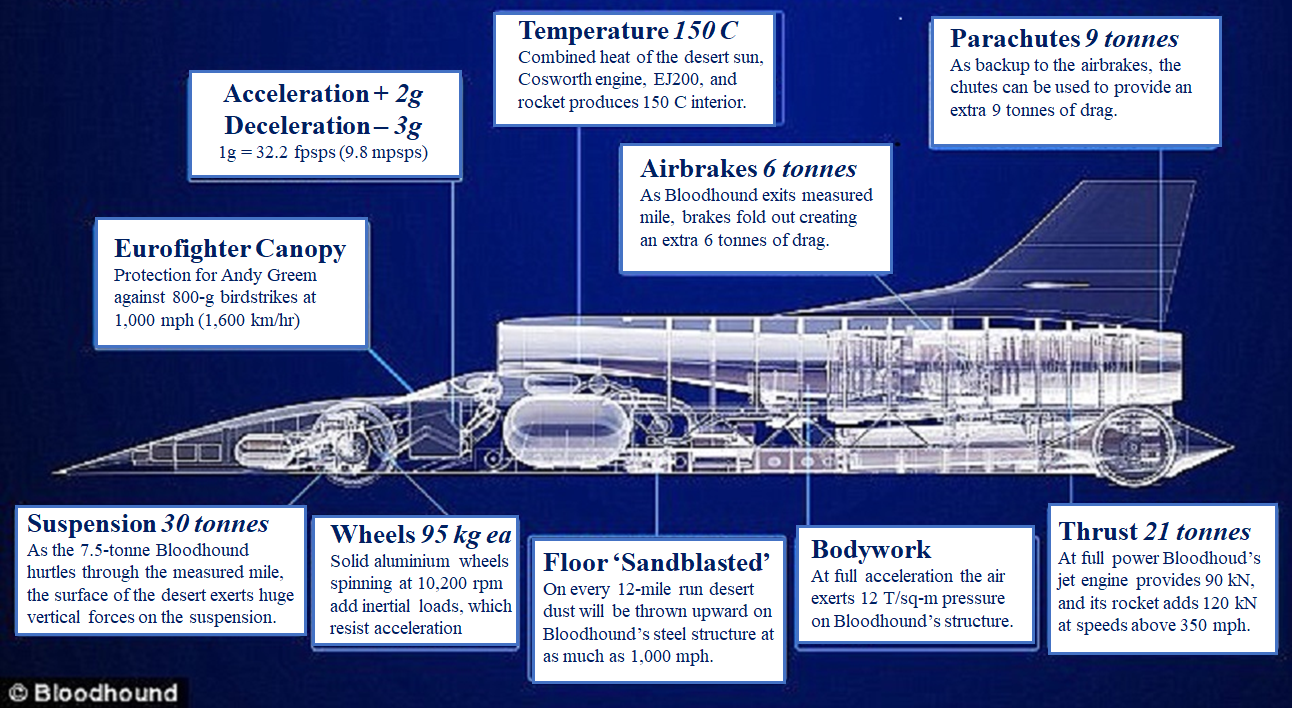|
World's Fastest Car
Copyright ©2020 by Paul Niquette. All rights reserved. October 19, 1997. on
the dry lake bed at Black
Rock Desert in Nevada,
Andy
Green drove the twin-jet Thrust
SSC at the super-sonic speed of 763.035
mph to establish the present Land
Speed Record (LSR) as shown in the tabulation
below. That record has stood for
some 23 years. Meanwhile, Green and his
engineering team have crafted the Bloodhound LSR, which is
design to establish a record of 1,000 mph in
2020 at Hakskeepan
in South Africa.

Bloodhound LSRThe diagram below shows many of the technical features of the vehicle design and describes key challenges imposed in achieving the target speed of 1,000 mph. Aerodynamic drag plus inertia will be overcome by the thrust of the single Eurojet EJ200 with afterburner up to 350 mph joined by a cluster of monopropellant rocket engines. The total thrust must overcome aerodynamic drag, which increases as the square of velocity, but that's not all. Newton's Laws of Motion require that as a force, thrust must overcome inertia for both acceleration and deceleration. The solid aluminum wheels add an immense moment of inertia and must be spun up to 10,200 rpm, which substantially increases the effective mass of the vehicle.  Solvers of the World's Fastest Dragster puzzle have studied acceleration limits for a wheel-driven racing car that reaches 329 mph in a quarter of a mile. That calls for straight-line accelerations of between four and five gs. Establishing a new Land Speed Record has nothing to do with acceleration. Or does it? The 'flying start' track is 12 miles long. The record is measured by photoelectric timers set one-mile apart in the middle of the run. The vehicle being measured for the record has 5.5 miles to accelerate from a standing stop to the beginning of the measured mile. At the end of the measured mile, the vehicle begins deceleration to the turn-around point 5.5 miles away. FIA rules call for the vehicle to be [a] brought to a stop, [b] turned around, [c] refueled, [d] inspected (with limited mechanical adjustments allowed, like repacking of drag-chutes), and [e] to complete the reverse run through the measured mile -- all within one hour. Let us calculate the minimum required accelerations for jet/rocket-powered racing vehicles. For the sake of comparison, each acceleration is to be held constant for 5.5 miles from the starting point to the beginning of measured mile...
|
